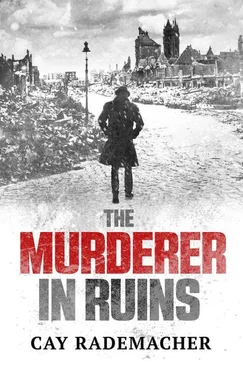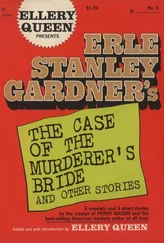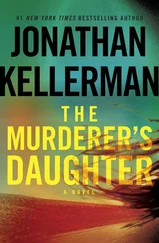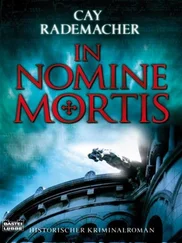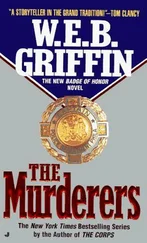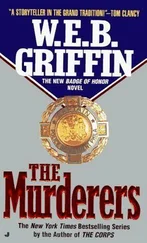Cay Rademacher - The Murderer in Ruins
Здесь есть возможность читать онлайн «Cay Rademacher - The Murderer in Ruins» весь текст электронной книги совершенно бесплатно (целиком полную версию без сокращений). В некоторых случаях можно слушать аудио, скачать через торрент в формате fb2 и присутствует краткое содержание. Год выпуска: 2015, ISBN: 2015, Издательство: Arcadia Books Limited, Жанр: Триллер, на английском языке. Описание произведения, (предисловие) а так же отзывы посетителей доступны на портале библиотеки ЛибКат.
- Название:The Murderer in Ruins
- Автор:
- Издательство:Arcadia Books Limited
- Жанр:
- Год:2015
- ISBN:9781910050750
- Рейтинг книги:5 / 5. Голосов: 1
-
Избранное:Добавить в избранное
- Отзывы:
-
Ваша оценка:
- 100
- 1
- 2
- 3
- 4
- 5
The Murderer in Ruins: краткое содержание, описание и аннотация
Предлагаем к чтению аннотацию, описание, краткое содержание или предисловие (зависит от того, что написал сам автор книги «The Murderer in Ruins»). Если вы не нашли необходимую информацию о книге — напишите в комментариях, мы постараемся отыскать её.
The Murderer in Ruins — читать онлайн бесплатно полную книгу (весь текст) целиком
Ниже представлен текст книги, разбитый по страницам. Система сохранения места последней прочитанной страницы, позволяет с удобством читать онлайн бесплатно книгу «The Murderer in Ruins», без необходимости каждый раз заново искать на чём Вы остановились. Поставьте закладку, и сможете в любой момент перейти на страницу, на которой закончили чтение.
Интервал:
Закладка:
‘Don’t count your chickens,’ Stave growled, grabbing his gun, coat, hat and scarf, managing at the same time to offer Ruge a cigarette.
This time he didn’t hesitate and took it with a nod of thanks.
‘Where is it?’
‘Lappenbergs Allee, Eimsbuttel.’
‘That’s way over in the west. Why do I have to attend?’
‘The victim is naked, Chief Inspector. And it looks like he’s been strangled. But this time it’s an old man.’
‘That’s a bit different,’ Stave muttered, pushing open the apartment door. ‘Have Maschke and MacDonald already been informed?’
‘Word’s on the way to them now. Herr Breuer wants them all to turn up at the scene. He’s going to be there too.’
That’ll be fun, Stave thought. By the time they got to the scene, on the far side of the Alster, it would be dark; not exactly the best time of day to carry out a search, not least when the boss is watching.
Within a few minutes they were on their way, once more in the old Mercedes with the clunking engine. Stave stared out of the window, trying to find a connection between the killings: both were naked, both had been strangled. But why a young woman and then an old man? What was the link? He suddenly felt ill. It was just hunger and the stale air in the car, he told himself, but he realised there was something else: the ghost of fear.
It was more then 11 kilometres from Wandsbek to Eimsbuttel. Even though Ruge was pushing the Mercedes to the limit, bouncing over potholes and swerving around huge bomb craters, it still took them nearly half an hour. When they finally stopped, Stave was relieved to open the door and climb out. He took deep breaths to get rid of the feeling of nausea in the pit of his stomach, then looked around; this was another working-class district, heavily bombed in the war. The trees along Lappenbergs Allee had either been burnt to the ground or chopped down for firewood. Behind them had been four-storey sandstone apartment blocks, all now destroyed. The previous summer work gangs had gone round pulling down the remaining walls and facades because they were in danger of collapse. Now the area was a bizarre wasteland of rubble and roofing tiles in piles three, five or even ten metres high, with bits of guttering, tangled wiring and ceiling beams protruding from them. Trampled footpaths led here and there between them. The nearest buildings still standing, as far as Stave could make out, were some 150 yards away.
A jeep screeched to a halt almost immediately behind the Mercedes, so close that for a moment Stave imagined it was going to crash into it. MacDonald climbed out and nodded to them. Better than a military salute, Stave thought.
‘Have you ever seen a murder victim before, Lieutenant?’ Stave asked. He wanted to prepare the man in case he keeled over at the sight.
But MacDonald seemed unflustered. ‘I suppose you could say so: I buried enough bodies during the war. But then again, no, insofar as soldiers obviously see things differently to the way the police do.’
Stave gave a mirthless smile and nodded in the direction of the pool of light created by two generator-powered spotlights set up between the piles of rubble. They could hear the hum of the generator. ‘I guess it’s over there.’
They followed a track that led from Lappenbergs Allee around a huge heap of ruins. After barely a dozen paces the track was already out of sight of the main road. They passed another couple of piles of rubble and then a bomb crater about one and a half metres deep filled with ice and a dented petrol canister lying in it.
The body lay next to it.
Two uniformed policemen were standing in the flickering glare of the spotlights; another was bending over the generator, while a photographer was setting up his kit. Maschke was walking up and down a little further away, smoking. Doctor Czrisini was taking off his suede gloves and replacing them with long rubber ones.
‘Definitely not a sex crime anyway,’ he said, nodding to Stave and at the body.
‘Maybe I should recommend you for my job if I get tired of it,’ the chief inspector replied.
‘Yeah, we could swap!’ Czrisini said with a laugh.
They bent down to take a look at the body. It was an old man, 65 to 70 years old, Stave reckoned. A short man, about 1.60 metres, slim, but not undernourished. His hands were not those of a working man. He was lying on his back, as if taking a rest, feet close together, his left hand to one side, open, the other behind his rear end. The body was frozen solid and covered with a fine layer of snow, as if dusted with icing sugar. The pale flesh beneath already showing signs of blood settlement.
The pathologist looked at the man’s head. He had a full, grey, bushy beard, a large, slightly hooked nose. The eyes were closed. When Stave looked closer he realised they were swollen, as if after a fight.
‘There’s blood in both ears,’ Crzisini said in a calm voice. ‘A small wound to the chin, eyes and forehead swollen from blows. The man was beaten either with a blunt object or with fists.’
‘Beaten to death?’
The pathologist shook his head. ‘I’ll only know for sure after the autopsy, but I reckon the beating was just to waken him. He may have been knocked down, might have lost consciousness.’ He indicated the body’s left hand. ‘Abrasions. It would seem he tried to defend himself, at first at least. Then he gave up. Do you see the fine line around his throat? He’s been strangled, with a wire loop, I’d say.’
Stave closed his eyes. ‘The man was attacked either front on or from one side, beaten to the ground with a hail of blows and then when he could no longer defend himself, strangled. He had probably lost consciousness by then.’
Crzisini pointed to a rectangular iron bar as long as his forearm, lying in the dirt near the head of the corpse. ‘The dark colour on that iron bar is probably blood.’
‘The murder weapon, then?’
‘Maybe. But it might just have been lying there and blood spattered on it when he fell.’
Stave wished it were still daylight. Apart from anything the flickering of the spotlight was hurting his eyes; there were shadows dancing everywhere amidst the ruins, and the drone of the generator made his head ache.
They waited until the photographer had taken the first few pictures, then Czrisini bent down and touched the body carefully, opening his eyelids. ‘Blue eyes,’ he noted. Using both hands he pulled the man’s lower jaw down. ‘No teeth. I assume he had dentures.’
Systematically, he examined the rest of the body from head to toe. ‘Small wart on the left hip,’ he noted. ‘Signs of a hernia, enlarged scrotum. Normally that would require a truss, and it would still cause problems walking.’
Stave looked silently over at the edge of the bomb crater. There was a dark-brown polished bamboo walking stick lying there, with a carved handle, covered in a layer of snow as fine as that covering the body.
‘That might have been his walking stick,’ he mumbled.
The flickering light briefly caught a metal button lying next to the body. When they finally got the corpse on to a stretcher, they found a leather strap under the body, like that of a rucksack.
Then Stave noticed something small and shiny on the ground just about where the dead man’s shoulder had been. He bent down and picked it up. It was a medallion, made of silver, no bigger than a tiny coin, on a thin, broken chain, also made of silver.
‘The killer must have missed that when he stripped him,’ Czrisini suggested.
Stave stared at the tiny circle in his gloved fist, took it closer to the spotlight, silently cursing the flicker. The reverse of the medallion was plain, polished smooth by long contact with the wearer’s skin. But the front bore a cross, standing on a sort of jagged hill, maybe a cliff even, and at an angle on either side two other objects that Stave thought at first might also be crosses.
Читать дальшеИнтервал:
Закладка:
Похожие книги на «The Murderer in Ruins»
Представляем Вашему вниманию похожие книги на «The Murderer in Ruins» списком для выбора. Мы отобрали схожую по названию и смыслу литературу в надежде предоставить читателям больше вариантов отыскать новые, интересные, ещё непрочитанные произведения.
Обсуждение, отзывы о книге «The Murderer in Ruins» и просто собственные мнения читателей. Оставьте ваши комментарии, напишите, что Вы думаете о произведении, его смысле или главных героях. Укажите что конкретно понравилось, а что нет, и почему Вы так считаете.
